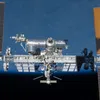NASA funds programme to produce videos to teach Hindi through Indian scientific innovations
In a recent announcement, NASA has funded a programme that would focus on the archaeological sites and will be administrated by the National Foreign Language Centre at the University of Maryland.
A programme funded by NASA in the US has produced a series of videos about famous archaeological sites and institutions in India along with lesson plans in Hindi to teach the language internationally in the context of science and technology.
The videos focus on scientific innovations at various sites like Amer Fort palace and Hawa Mahal in Jaipur, the rust-resistant Iron Pillar of Delhi, UNESCO Heritage site Qutub Minar, the Chand Bawri step well, and headquarters of the Jaipur Foot, a prosthetic given free to impoverished amputees in 80 countries across the world.
The NASA-funded programme STARTALK, which makes it a priority issue for national security to expand the teaching and learning of Hindi, Arabic, Chinese, and other world languages, made a $90,000 grant to Ved Chaudhary, Director of the project.

Hawa Mahal, Jaipur
The programme is supplemented by funding from Chaudhary's New Jersey-based foundation Educators' Society for Heritage of India.
The programme is administered by the National Foreign Language Centre at the University of Maryland.
"This was a unique experience. I never knew I was going to have so much fun doing my research," said Alok Kumar, principal investigator of the project.
Supported by research studies, Kumar said, context is crucial in learning new languages. Each video, designed for learners from middle school through college, employs a STEM (science, technology, engineering and math) perspective "to provide interesting and incredibly rich context to create learning experiences that can push learners to the advanced level of Hindi."
Kumar, professor of physics at State University of New York, has published several books on ancient Hindu science, mathematics, and medicine. "I met a number of high-quality individuals who have made a profound impact on my life," he said.
The University of Maryland said that science-based innovations are abound in the sites Kumar chose.
With no air conditioning in 1799, a Hindu architect designed the honeycomb-patterned Hawa Mahal as a "Palace of Breezes," taking advantage of what is known as the "Venturi effect," Kumar said, adding that air enters narrow passages of the building, increasing the speed of flow and producing natural cooling.
The nearly 24-foot-tall Iron Pillar of Delhi, built in the year 402, is a testament to the skill of Hindu metal smiths who processed phosphorus-rich iron that, instead of corroding, creates an even, protective layer that has withstood centuries of monsoons and scorching summer heat, the university said.














